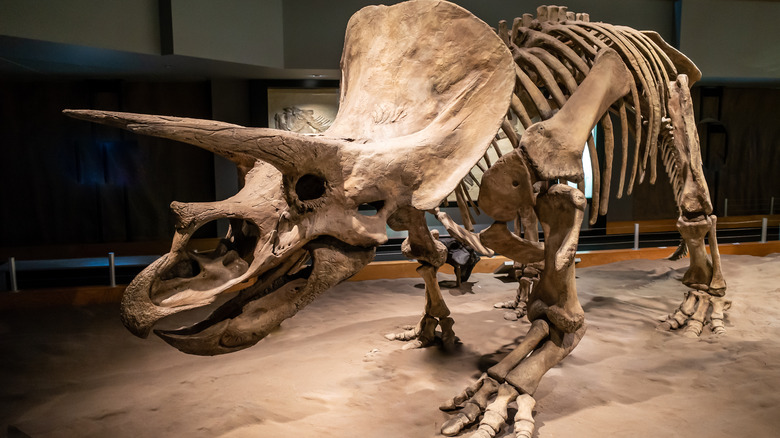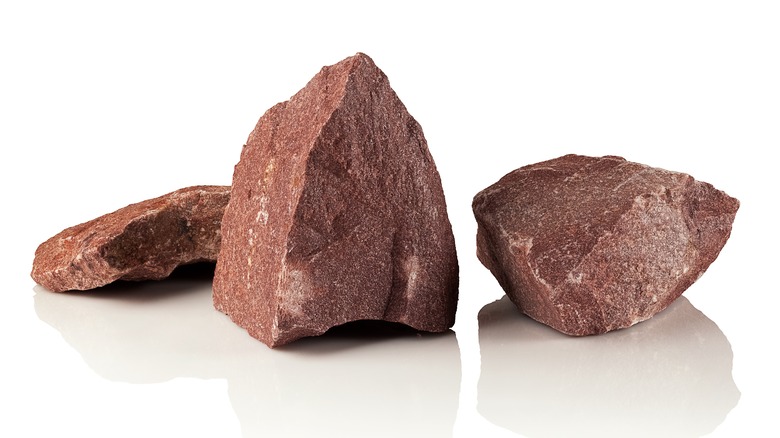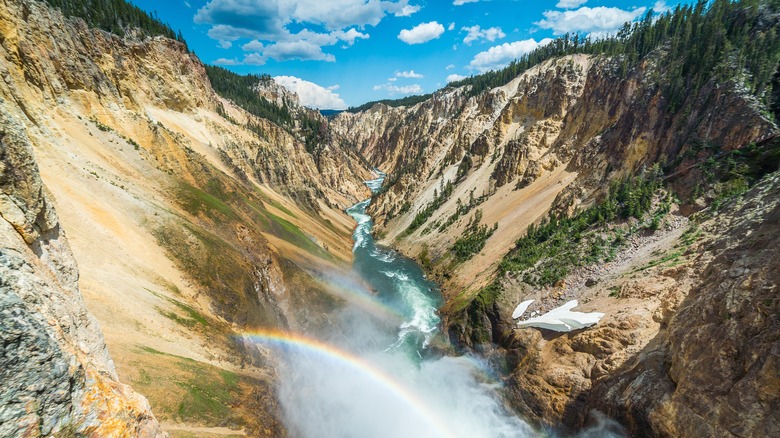The Reason Why Some Scientists Think Dinosaurs Ate Rocks
It can be difficult to comprehend that dinosaurs lived millions of years ago, especially when researchers are still finding new ways in which these giant animals impacted the earth. According to an article published in Live Science, we now know that dinosaurs were migratory animals. Fossilized dinosaur teeth taught researchers that they would migrate hundreds of miles to find food and water.
What's even more surprising is that researchers are still uncovering new ways these dinosaur migrations have left their mark. Fossilized dinosaurs aren't the only pieces of history that tell us what went on all those years ago. Geologists spend their time working tirelessly to learn as much as possible through rocks, and a team of geologists came across something quite interesting when conducting a study on a series of rocks that turned up in a landscape far from where they originally belonged. How were these rocks found so far from their previous home? Well, studies show that dinosaurs are to blame.
Gastrolith stones originally found in Wisconsin turned up in Wyoming
In a study published in Terra Nova journal and cited in Live Science, it was discovered that gastroliths or pink quartzite that had been found in Wyoming originally came from Wisconsin, over 1,000 miles away. Josh Malone, lead researcher and graduate student in the Jackson School of Geosciences at the University of Texas Austin believes that these gastroliths were transported by way of dinosaurs. More specifically, in the dinosaur's stomach.
The study is evidence of one of the longest known dinosaur migrations. The pink quartzite that was found in Wyoming is usually only be found in sparse locations around the United States. The study in Terra Nova journal explains that sauropods most likely consumed these stones in an effort to assist their digestive tract before being transported during the animal's migration. The gastroliths were initially found by Malone and his father in mudstones while out in Wyoming. Being swallowed by these giant dinosaurs would likely explain the smooth surface of the stones after so many years, per The New York Times.
Researchers learned more about these stones by crushing them
Josh Malone and the rest of the research team learned that the pink quartzite rocks that had been discovered weren't found in proximity to dinosaur bones. To get a better understanding, the rocks were then crushed into a dust-like form to study the zircon crystals within. Zircon crystals are a tough substance that can withstand time. According to a National Geographic article, some zircon crystals are now nearly 4.4 billion years old, and the article describes them as "tiny time capsules that retain the chemical fingerprints of this extremely early time."
These fingerprints allowed Malone's research team to learn that the age of the stones found in Wyoming matched the age of the rocks in Wisconsin. According to Malone, this finding led to the theory that these rocks were eaten by dinosaurs before a migration. "We used that to hypothesize that these rocks were ingested somewhere in southern Wisconsin and then transported to Wyoming in the belly of a dinosaur," Malone said via The New York Times.
While some remain skeptical on the subject, the rocks had to move somehow, and the theory has yet to be disproved. However, even if it is just a theory at this point, the study is what led Malone into the realm of geology, no doubt to make more new discoveries.


